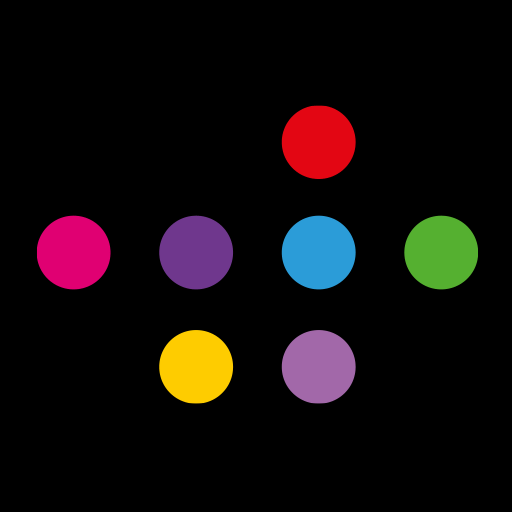From Press to Pixels – the Evolution of Print and What it Means for Businesses Today
In our always-on, screen-saturated world, it might be tempting to think of print as yesterday’s news. But, in reality, print continues to evolve and remains one of the most trusted and creative tools in a marketer’s kit.
At iQ Digital House, we’ve spent the last 20 years helping businesses harness the power of modern print. From banners and brochures to display graphics and to personalised packaging, print is not just surviving, it’s thriving.
Understanding where print came from helps us appreciate its relevance today and how it continues to offer creative, practical solutions for modern marketing.
So how did we get here? And where is the industry heading next? Let’s take a look.
The Origins of Print: Gutenberg and the Printing Revolution (c.1440s)
The modern print journey began in the mid-15th century with Johannes Gutenberg, who invented the movable-type printing press. This single innovation sparked a communications revolution. Before Gutenberg, books had to be copied by hand, often by monks, and could take months or even years to complete.
The first major book printed with Gutenberg’s press was the Gutenberg Bible around 1455. For the first time, the written word became widely accessible. Literacy rates began to climb and knowledge spread like never before.
By the early 17th century, newspapers started appearing. The world’s first printed newspaper, Relation aller Fürnemmen und gedenckwürdigen Historien, was printed in 1605 in Strasbourg. It marked the beginning of mass media and shaped how societies received information for centuries to come.
The Industrial Revolution: Print Goes Mainstream (1800s–early 1900s)
The 19th century saw dramatic shifts in printing technology. Steam-powered presses replaced manual labour, enabling fast and large-scale production.
Print advertising exploded. Posters, leaflets, magazines and newspapers were now affordable and widespread. Businesses began using print as a serious commercial tool, not just for information, but for brand building.
This era introduced the idea of print as communication at scale – a foundation that still supports marketing strategies today.
Offset Lithography and the Mid-Century Print Boom (1950s–1980s)
By the mid-20th century, offset lithography had become the dominant printing method for high-volume commercial work. It offered sharper images, full-colour capability and consistency at scale.
The post-war economic boom fuelled a surge in printed marketing: catalogues, glossy brochures, magazines and consumer packaging all took off. Litho remained the gold standard for decades, enabling brands to express their identity visually and with impact.
Even today, litho printing remains a big player for large print runs and bulk orders. While digital has taken the lead for smaller, personalised jobs, litho’s high efficiency and cost-effectiveness over long runs means it still plays a key role in the print world.
As print technology advanced, many providers began working together – collaborating across litho, digital and large format processes to meet evolving customer needs.
The Digital Printing Era Begins (1990s–2000s)
The late 1990s saw the rise of digital print technology, which transformed the industry again.
Suddenly, it was possible to print high-quality materials without plates, lengthy setup or high minimum quantities. This opened the door to:
- Short print runs
- Variable data printing
- Faster turnarounds
- More sustainable, on-demand production
Digital print made personalisation and agility a reality, especially for SMEs, creatives and marketing teams.
iQ Digital House Enters the Scene (2005–Present)
Founded in 2005, iQ Digital House arrived just as digital printing was hitting its stride.
Over the past two decades, we’ve embraced this transformation and evolved alongside it – adding large-format capability, display graphics, packaging solutions and more to support our clients’ growing needs.
From simple business cards to full retail environments, we help clients use digital print to tell their story, elevate their brand and connect with audiences.
The Print Renaissance: Today’s Hybrid World (2010s–2020s)
In the past decade, print has enjoyed a renaissance. Far from being replaced by digital media, it has carved out a role as a premium, tactile and trustworthy medium that works alongside online channels.
Modern print is:
- Tactile – a physical presence in a digital world
- Targeted – due to variable data and short runs
- Creative – thanks to endless format and finishing options
- Sustainable – smarter materials and reduced waste
It’s now common to see integrated campaigns where print and digital reinforce one another – QR codes, augmented reality, custom mailers and personalised packaging bring physical and digital together in powerful ways.
Flatbed & Large Format: Pushing Creative Boundaries
Technology like flatbed printers has pushed the limits of what’s possible in print. No longer confined to paper or card, digital print now extends to wood, metal, plastic, acrylic and fabric.
This unlocks possibilities for:
- Custom signage and wayfinding
- Exhibition, event graphics and immersive experiences
- Branded environments
- Retail POS and window displays
It’s never been easier – or more exciting – to make a bold statement in print.


Print Meets Automation
Modern print is also faster and more efficient thanks to automation and robotic workflows. Tasks that once required manual setup, like cutting, collating and finishing, are now completed seamlessly with machine precision.
This means:
- Faster turnarounds
- Greater consistency
- Better use of resources
As expectations around delivery speed and flexibility grow, automation is becoming a vital part of digital print’s value proposition.
What’s Next? Smart Print, Inkjet & Sustainability
Industry Innovation
Last year, we attended drupa 2024 – the world’s largest print technology expo. It was clear: the future of print is smart, fast, sustainable and integrated. From AI-assisted design tools to modular press systems, the next decade of print is all about agility and innovation.
Smart Print
Technologies like QR codes, NFC (Near-Field Communication) and even printed electronics are transforming print into an interactive medium. Think packaging that links to video content or signage that triggers an augmented reality experience. Fantastic opportunities.
Inkjet Innovation
Inkjet printing is becoming more affordable, compact and flexible. New-generation machines deliver high speed and high quality on a wide range of materials, without the bulk or cost of older setups. This technology is set to drive growth in everything from packaging to signage.
Sustainable Materials
With growing awareness around environmental impact, there’s increasing demand for:
- Recyclable and compostable substrates
- Water-based inks
- Waste-minimising workflows
- Carbon-neutral production processes
At iQ, sustainability is a key focus and one we’ll be exploring in more detail in upcoming blogs.

iQ Digital House’s all-electric delivery van
Print Isn’t Going Anywhere!
In a world full of scrolling, swiping and screen fatigue, print continues to offer a unique, memorable touchpoint. It’s tangible, trusted and often more effective at building emotional connections with audiences.
Print has evolved but it hasn’t disappeared. In fact, it’s stronger than ever, with more customisation, creativity and technology than before.
At iQ Digital House, we blend 20 years of experience with future-focused thinking – helping brands to deliver print that performs. If you’re looking for a way to stand out, connect and leave a lasting impression, print deserves a place in your next campaign.
Get in touch with our friendly team to discuss your project and request a quote.
Published June 2025
Categories: Graphic Design, Small Format Digital Print, Large Format Digital Print, Packaging, Storage and Distribution, Future of Print





